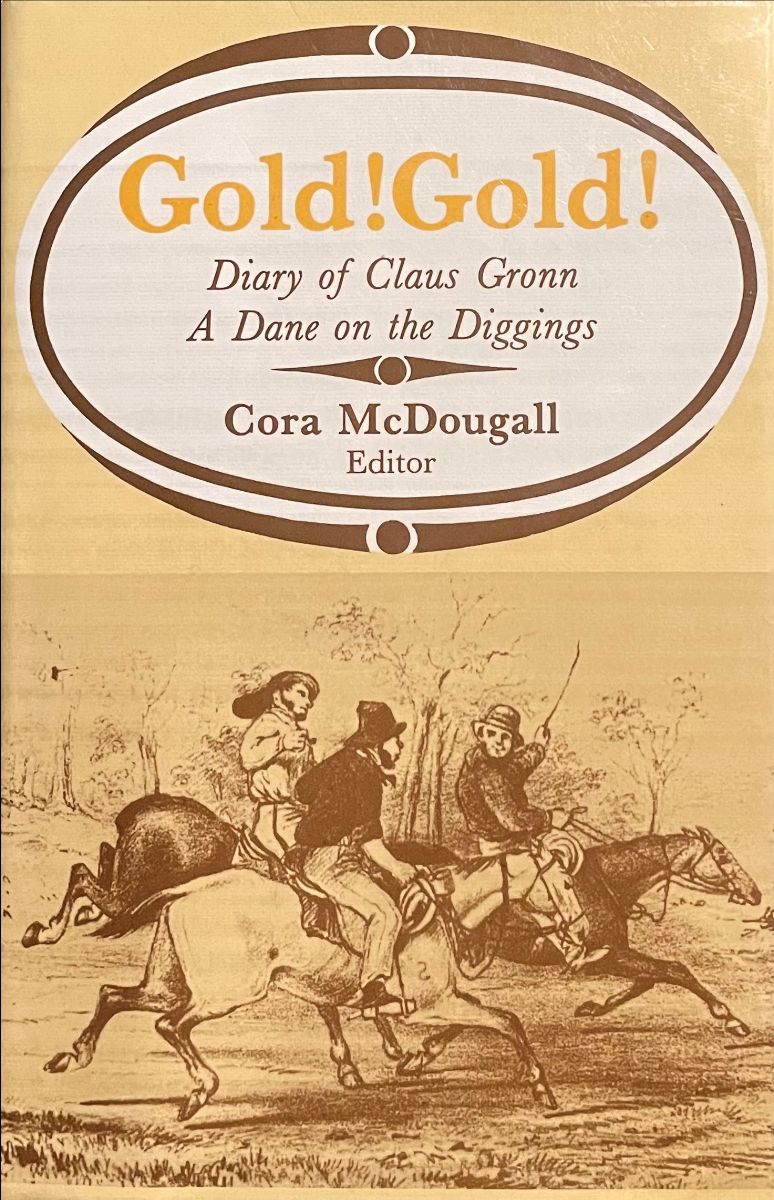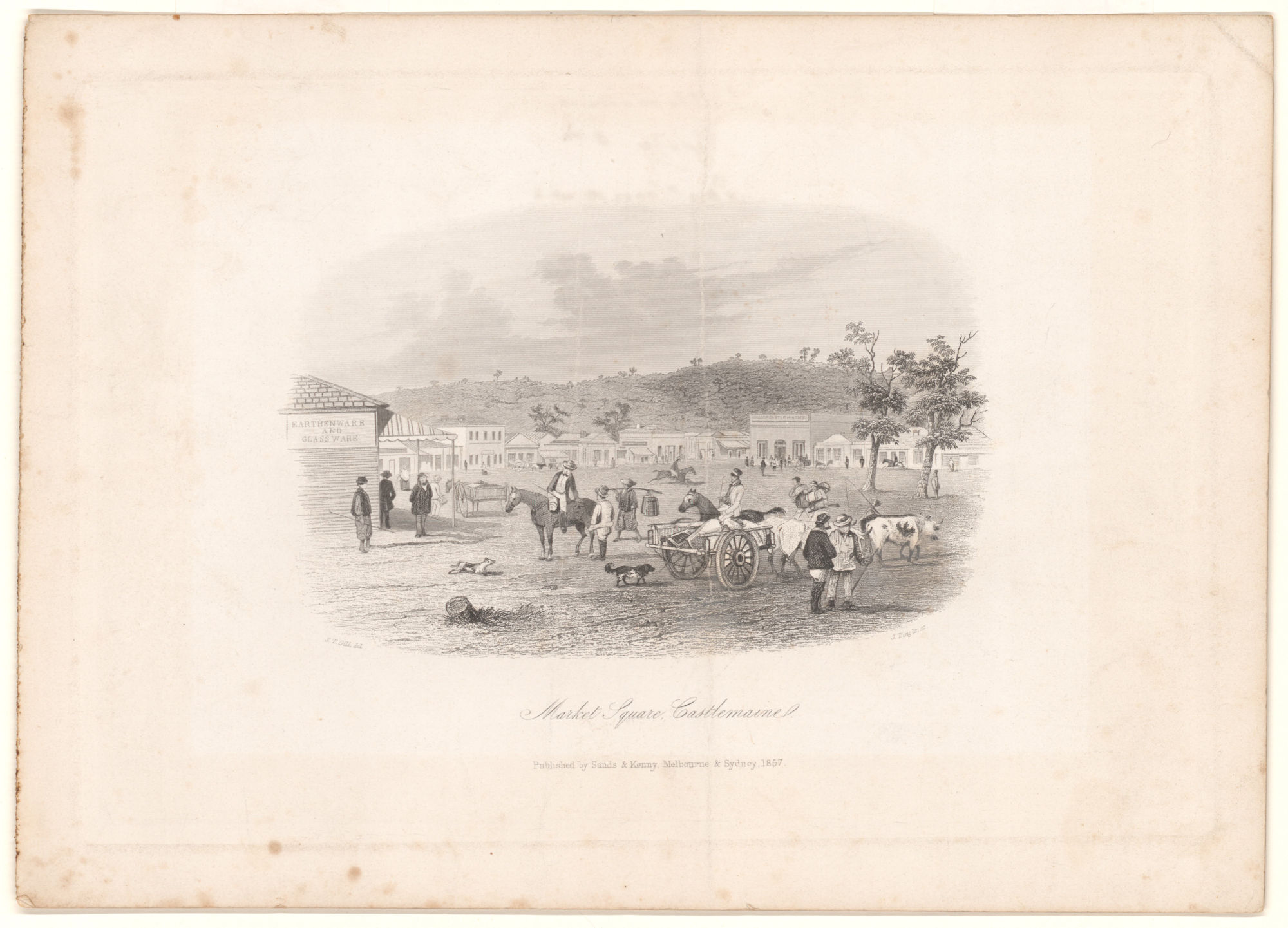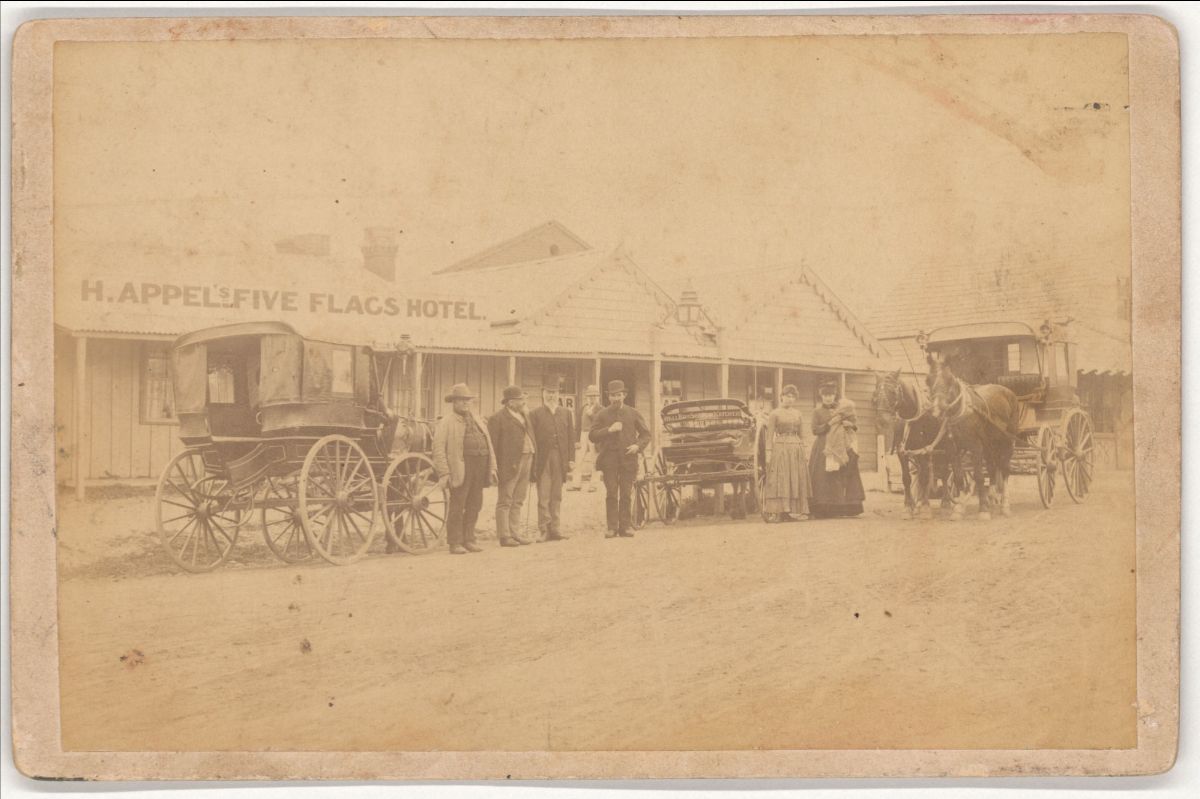Frazer on Grønn
CAM Front of House Officer Sarah Frazer takes us on a journey of research and discovery as she delves into the life of 19th century Danish migrants at Campbells Creek – or Little Copenhagen – by way of the CAM Collection.

The lure and addiction of digging up the past
When I started volunteering at CAM in 2019 my motivations were not entirely altruistic. I wanted to learn more about the town I’m raising my family in. I also wanted to spend time among cultural collections again after working in the industry for 15 years and then taking a maternity break. I missed the locked stores of treasures, the knowledge banks of colleagues, the ingenious way exhibitions are pulled together. Mostly, I missed the stories; those latent layers of intangible wealth that every object harbours.
It didn’t take long to discover that stories abound at CAM. In my current role as a Front of House Officer, I received an enquiry about Danish migrants to Castlemaine during the gold rush. It was obvious to me that I needed to consult a knowledge bank. I turned to recently-retired volunteer Diane Frape-Linton, who went straight to the museum store and returned with a book from the collection. It was tellingly titled Gold! Gold! and most wonderfully subtitled Diary of Claus Grønn, A Dane on the Diggings. Shazam!

Claus Grønn’s first-hand account charts the human struggles and accomplishments of a young man trying his luck with nothing save his own wits and brawn. It is an abridged version translated from the original Old Danish, edited by his granddaughter, and thoughtfully illustrated using contemporary maps and the lithographs of S. T. Gill. It is a 15 x 22cm portal to the Castlemaine of 170 years ago, punctuated by various assaults and pleasures to the senses.
When absurdity waxes high and hygiene wanes to a life-threatening low, Grønn’s humour is at its best. We hear in his words the day’s debriefing around crackling campfires, wince at the warning shots fired into darkness, feel relief in the sound of violins carrying in the crisp night air. His description of acrid-smelling gas catches in the back of the reader’s throat as it permeates tight spaces already claustrophobic, clammy, and close. And it is in this world, where the ever-present shadow of mortality must be constantly countered by the light of quick-thinking, that Grønn introduces us to his community of 500+ Danish migrants, encamped at Campbell’s Creek, known then, among its residents, as Little Copenhagen.

I have read and re-read Claus Grønn’s diary, lured by his encounters with life, death, love, fortune and tragedy. I can’t help but dig a little deeper and I am rewarded with what I find. Right here at CAM I discover: A photograph of Hans Appel’s Five Flags Hotel, which became a hub for Scandinavian miners; letters to Carl Tolstrup who owned a general store next to Five Flags and went into competition with Claus Grønn; an information board on display in the CAM museum about Bertha Jorgenson OBE, who was born in Castlemaine, learnt violin from her father and went on to become the longest-serving (and first female) leader of the Melbourne Symphony Orchestra.
The addiction grows from sprint to marathon. I take a walking tour of Chewton to better understand the lay of the land. I learn there is a cemetery for children and am reminded of how Claus and his wife, Mary-Ann, had to bury nine of their children. I learn about the grim discovery of bodies months-hidden in a mineshaft and am reminded of Claus’ own escape from a shaft that suddenly began flooding. I learn more about the impacts of colonisation, how the creeks had to set new courses, how the native vegetation was stripped once by farming and then again by mining, and how the land is regenerating in the hands of volunteers.
And now I have come full circle, or full spiral since education is continuous and one story always leads to another. I have found some stories hidden away in an unassuming object. I have learned a little more background about the town in which I raise my children. I have learned myriad fates of children raised here 170 years ago. Many will think otherwise, but I think Gold! Gold! is a love story – between land and inhabitant, between friends, between lovers and their descendants. You can decide for yourself, as there are copies of Gold! Gold! available for borrowing at the Castlemaine Library.
Sarah Frazer
January 2022